Snow blowers Stiga: description, types and tips for use

Stiga is a Swedish company. She specializes in the manufacture of garden equipment for gasoline and electric motors. Among other things, the company provides the buyer's attention with high-quality tools for the winter - snow blowers.

Specifications
A snow blower is essential on the farm, especially when you own a large area. In winter, manual cleaning can take anywhere from two hours to infinity. At the current pace of life, not everyone can afford to spend so much time. Therefore, a snowplow from the Swedish company Stiga will come to the rescue.
There are a large number of brands on the snow removal equipment market, however, it is worth giving preference to Stiga for several reasons.
- Since all tests are carried out in Sweden, you can be sure that all engines are cold-resistant and will work perfectly in the Russian climate.
- According to the characteristics, all Stiga units have several speeds. Thanks to this, snowblowers are manoeuvrable, and with their help you can clean even in hard-to-reach places.
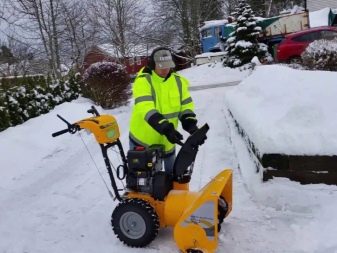
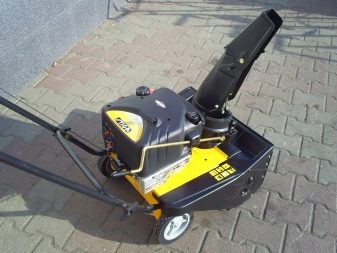
- Another important characteristic is the presence of an electric starter. It is found in gasoline engines, electric motors, and battery cars.
- Since all snow blowers have been specially designed for backyard clearing, they gently remove snow from tiles and tiles without scratching or damaging the surface. The machines use a rubberized auger.
- Snow throwing distance varies, but they are sufficient - up to 15 m.
- The assortment is constantly updated taking into account the needs of the buyer. Today, it is rare to find a self-propelled Stiga machine that is not equipped with an LED headlight.

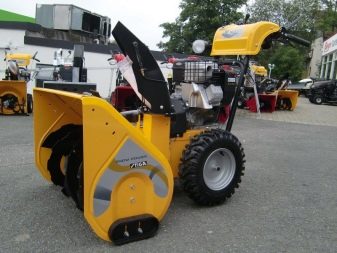
Features of the device
Stiga snow throwers consist of standard parts.
- The body is available with an attachable or integrated snow bucket. Inside the bucket there is an auger that crumbles and moves the snow deeper.
- A snow chute is located above or directly behind the bucket.
- On the sides - caterpillars or wheels.
- At the back is a metal handle frame with a control panel on it. There are also handles to control the position of the chute.
Stiga models are distinguished by spare parts that are used in snow blowers. As a rule, in case of repairs it is better to use only original parts.
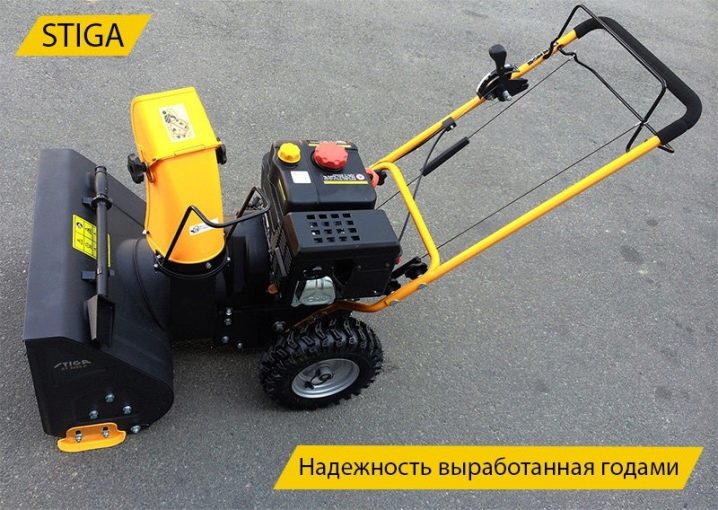
They are widely available on the market. For example, drive belts or auger belts can be ordered online without any problems. Also, all parts can be found in a large supermarket.
Advantages and disadvantages
As with any technique, the Stiga has several pros and cons, noted by the owners. You should start with the positive aspects.
- Testing of all equipment of this brand takes place in Sweden, where the climate is similar to the Russian one. Therefore, you do not have to worry that the snow throwers will not be sufficiently adapted for our weather conditions.
- All snow removal equipment is equipped with powerful motors. In professional models, the power reaches 13 liters. with. - this is quite enough to effectively clear an entire street.
- Thanks to durable materials, you can clean off not only freshly fallen snow, but also trampled, and even icy ones.
- The company has been on the market for a long time, and buyers note that the equipment is distinguished by its reliability and long service life. And in case something breaks, there is a guarantee. There are also many service points located in Russia.
There were no specific drawbacks to Stiga products. All flaws are associated only with the features of the types of snowblowers. A common example is the Stiga electric snow blower, which lacks a constant connection to the availability of the mains supply.
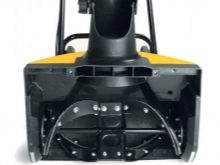
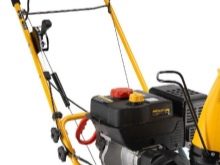

Views
Stiga snow blowers are available in various modifications. First of all, they are divided into types depending on the power source used.
Electrical
Electric snow throwers are powered by an electrical network. A prerequisite for their use is accessibility to the outlet to which the cord must be connected. On the one hand, the use of such units is associated with certain advantages:
- environmental friendliness;
- noiselessness.
On the other hand, electric devices are less mobile than gasoline or battery-powered ones, since you constantly have to worry about the electrical cord. It gets tangled underfoot, which does not make snow removal easier.
In addition, such snow blowers are low-power, so you will have to spend a decent amount of time cleaning.
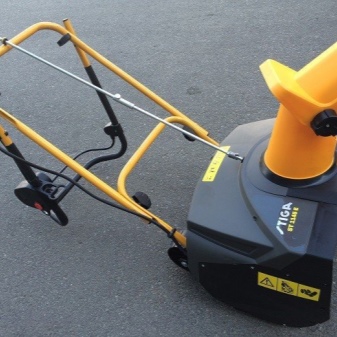
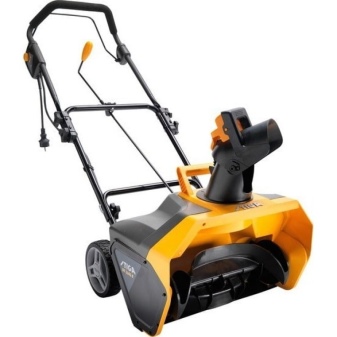
Rechargeable
Such devices are powered by a battery, which is either inserted inside the device, or located nearby. As a rule, there is a special trailer for the battery. This does not make the job easier as the snow blower becomes more massive and less manoeuvrable.
The operating time of machines with a battery is short. Do not believe everything that manufacturers write - often during use in the cold, the operating time drops dramatically. In addition, the battery takes a long time to charge.
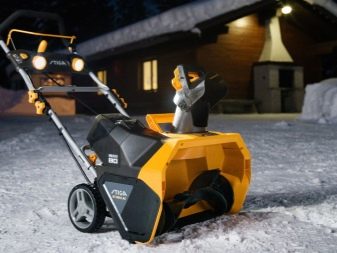
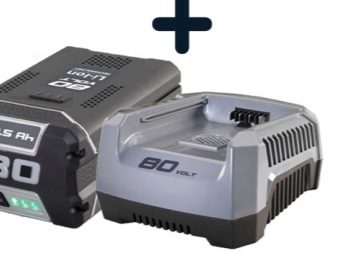
Gasoline
To date, these are the most practical of all the analogs presented. They are distinguished by long operating time, mobility, high maneuverability. Naturally, the number of Stiga models in this category is the most numerous.
On the other hand, there are also disadvantages:
- noisy cars;
- using gasoline engines is not entirely environmentally friendly;
- in the event of a breakdown, complex and expensive repairs will be necessary.
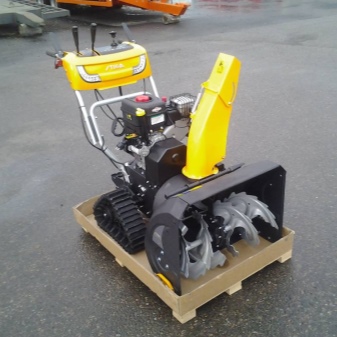
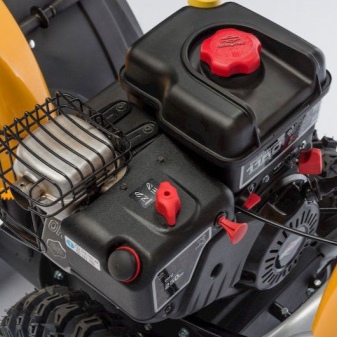
By the type of drive, wheeled and tracked vehicles are distinguished.
- Wheeled. Versatile models that are in demand for household use. Wheels are used with a small diameter and wide so as not to fall through the snow. Provide good maneuverability for vehicles.
- Tracked. Tracked models are used to work on difficult terrain or with a deep layer of snow. The tracks allow the snow blower to drive almost anywhere. For use on self-propelled vehicles only.
Smoothly moving on to the last type of classification - the type of movement, we can distinguish between self-propelled and non-self-propelled vehicles.
- Self-propelled. The snow blower is driven by the engine. The person only sets the direction and follows the car.
- Non-self-propelled. Non-self-propelled units must be nudged to move. This also includes electropaths.
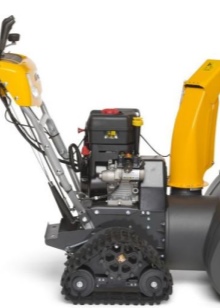
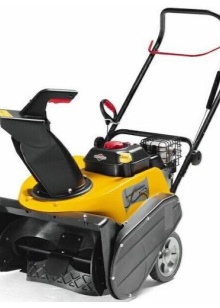

The lineup
It is not possible to consider all existing models, so it is most logical to dwell on the most popular and demanded among Russian consumers. The overview includes data on technical characteristics and areas of use.
Stiga ST 4262 PB
This gasoline-powered, self-propelled snow blower is intended for domestic use. Power of 6 liters. with. enough to clear an area of about half a hectare. The bucket is large: the snow coverage is 52 cm, and the height is 51 cm.
The unit is completely metal, the auger and the chute are made of metal. Therefore, you can not be afraid that any of the parts will be damaged due to too icy stone or debris.
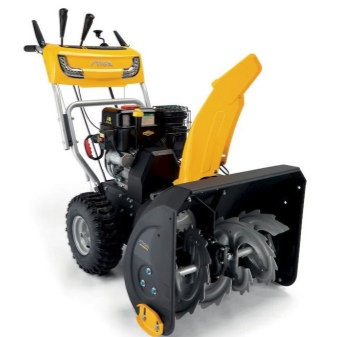
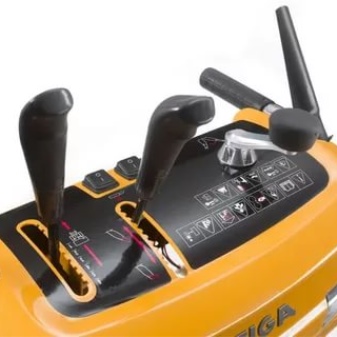
The snowplow is quite loud. The maximum noise level declared by the manufacturer is 107 dB.To neutralize this shortcoming, the developers have supplemented the model with some additional functions. It has a headlamp and heated grips for more comfortable handling.
The device weighs 95 kg. The retail price ranges from 69,800 to 74,900 rubles.

Stiga ST 4851 AE
This model is one of the simplest and most budgetary ones. The low price, which is about 16,900 rubles, is achieved by saving on some additional functions.
Such a device is not self-propelled. To make it move, you need to apply physical strength. In conditions when the snow fell a long time ago, was trampled down, trampled by a machine, iced up, this may require a considerable amount of effort.
The bucket is built-in here: the snow grasp width is 51 cm, and the height is 30 cm. The auger is made of plastic covered with rubber. On the one hand, this allows you not to be afraid of damaging the coating, and on the other hand, it becomes necessary to constantly monitor, so that debris and foreign objects do not get under the auger. It can break easily.
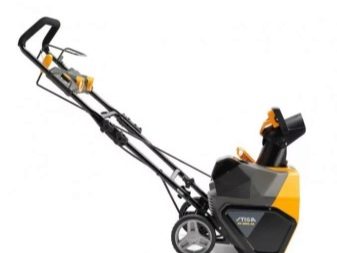
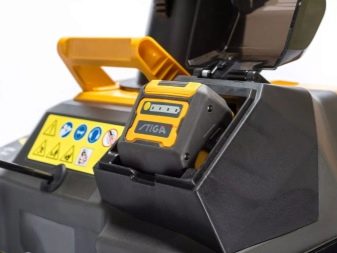
The snow discharge pipe, also made of plastic, is adjustable. The adjustment angle is 180 degrees. The throw range is also configurable. In this model, this value is small - from 1 to 6 m. The adjustment can be carried out both manually and by the control panel.
The model is relatively quiet. The maximum noise level is 84 dB. The weight of the unit is only 15.8 kg, so a woman can also handle it. Powered by a battery.
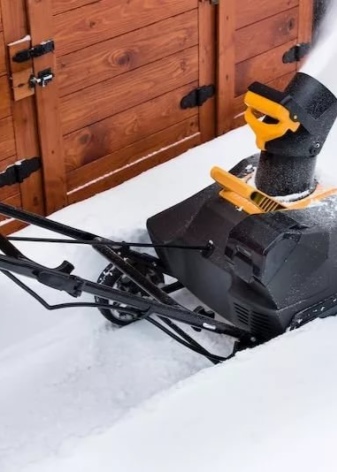
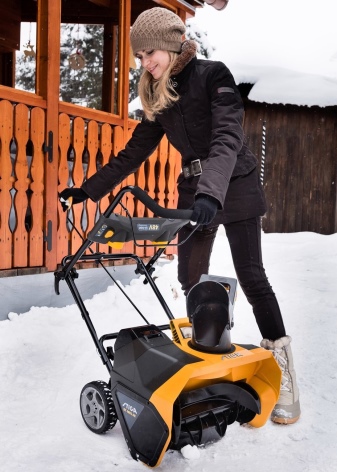
Stiga ST 1131 E
This model is, rather, not a snow blower, but an electric shovel. Snow is captured at a width of 31 cm and at a height of 23 cm. For an electric shovel, the throwing range is large - up to 4 m. However, the chute cannot be adjusted either manually or mechanically.
It is logical that this unit is not able to cope with "difficult" types of snow, such as ice or compacted layer. This is due not only to the low power of the motor (about 1.5 liters. S), but also to the fact that the shape of the screw does not contribute to the crushing of ice blocks. The auger is smooth, without teeth and notches.
But with an electric shovel, you can quickly clean the paths after a just passed snowfall, while the snowdrifts are not very high.

The shovel is powered by an electric motor, so it won't work far from home unless you pull the extension cord. As users point out, there are a few more disadvantages. The material from which the auger is made cannot be called durable. If a stone falls into the bucket, then the edges break off immediately. And the second point: although the manufacturer stated otherwise, the shovel is non-frost-resistant - at a temperature of -20 degrees, the plastic begins to burst.
However, consumers noted the ability to operate with one hand and the low weight of the unit - only 6 kg. The retail price, which ranges from 4,400 rubles to 4,800 rubles, is also encouraging.

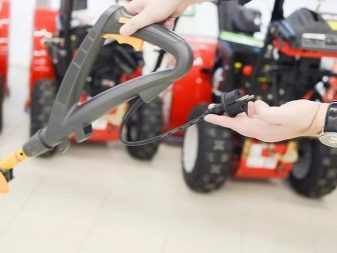
Stiga ST 5266 PB TRAC
The most powerful existing model in the Stiga range, the ST 5266 PB TRAC is designed for professional use. The capture width here is 66 cm, the height is 51 cm. Snow is ejected through a metal chute, throwing distance - up to 12 m. The ejection pipe can be adjusted directly from the control panel, changing direction and distance during operation. The chute can be rotated 190 degrees.
It uses a gasoline engine with an output of almost 7 liters. with. There are many gears - six forward and two reverse. Additionally, the developers have worked with the volume level. Thus, the maximum noise level produced by the device is 100 dB.

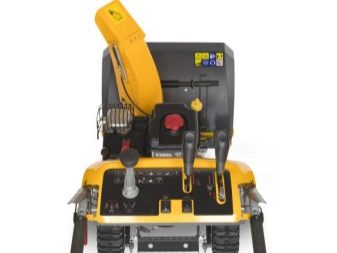
The metal auger is equipped with teeth, which makes it easy to crush small pieces of ice. He can also cope with garbage, but it is better that stones do not fall into the bucket - deformation and damage are possible.
The caterpillar track makes it possible to work with this self-propelled model in difficult terrain conditions. Prices range from 99,500 rubles to 107,000 rubles.
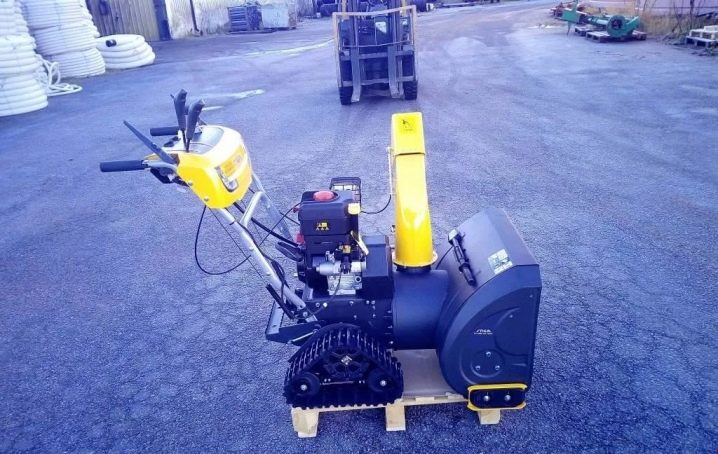
User manual
Operating instructions are included with each individual model.It contains all the necessary information about the device of the snowblower, its components, about setting up and repairing, about the causes of possible malfunctions. For example, in the instructions you can find instructions on how to change the oil, how to remove the gearbox, etc.
Be sure to read the instructions before starting to work with the technique. There have been cases when an incorrect procedure led to a breakdown of the unit. Due to the fact that the fault lay with the most negligent owner, warranty service was denied.
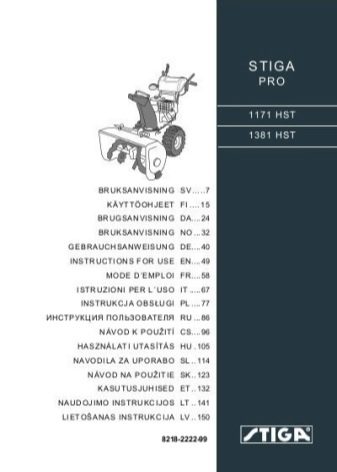
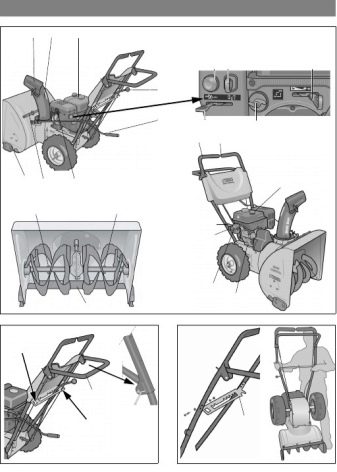
For an overview of the Stiga snow blower, see the video below.



































































The comment was sent successfully.